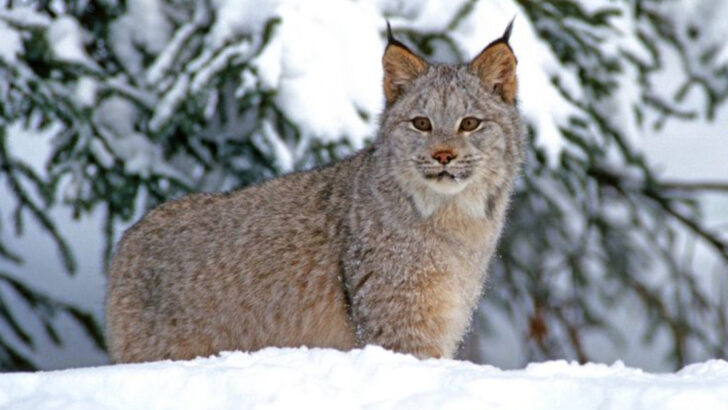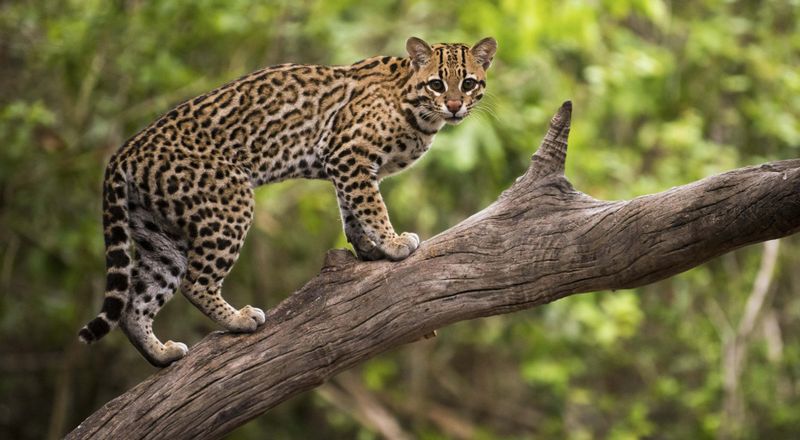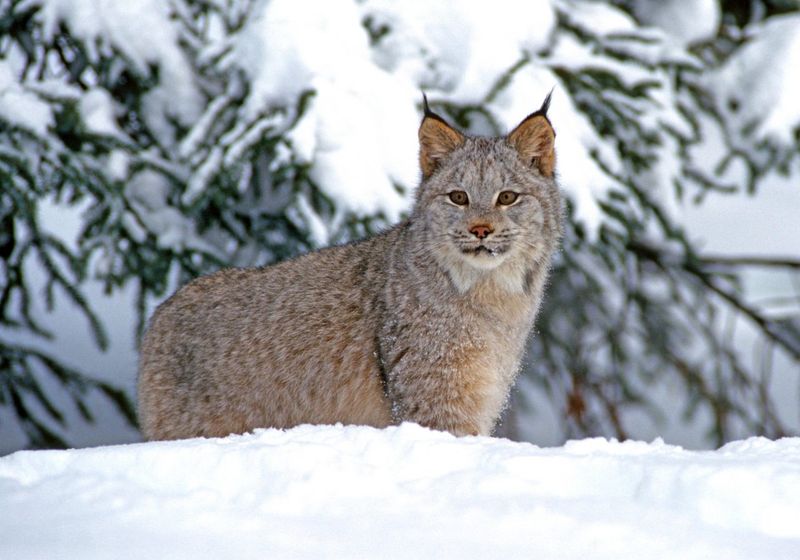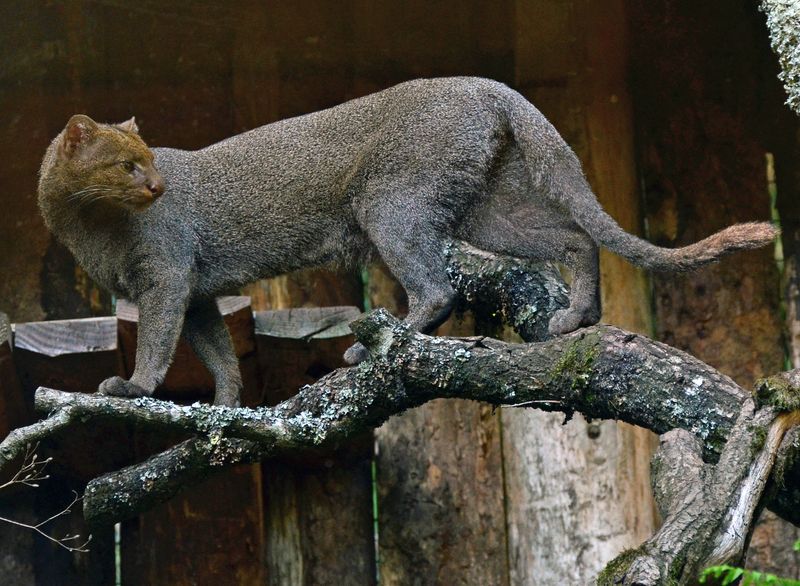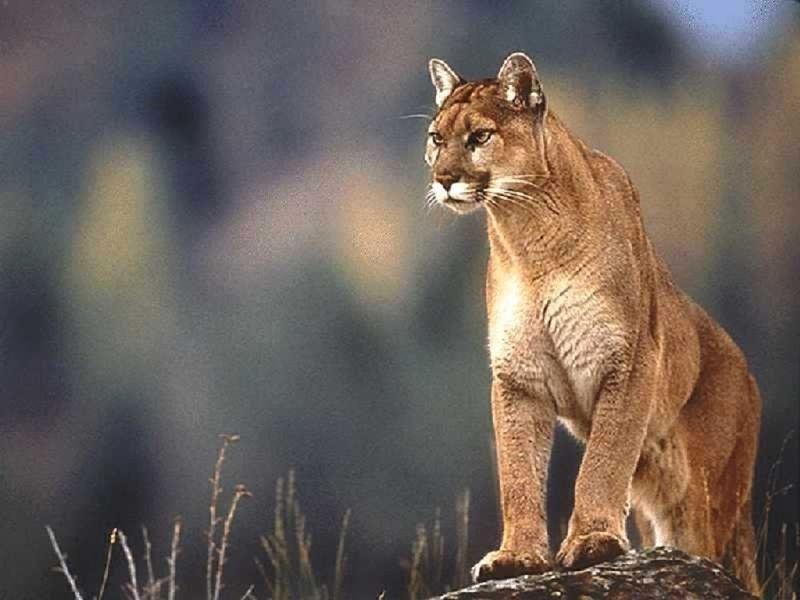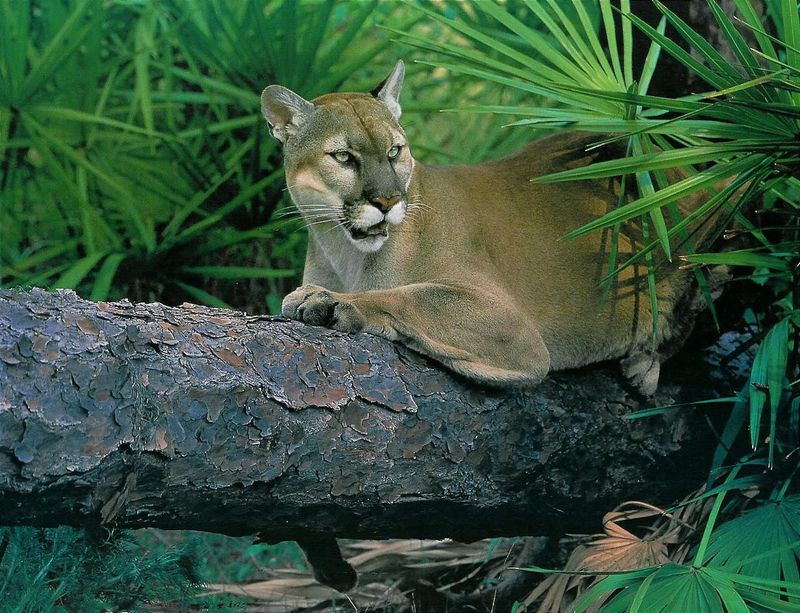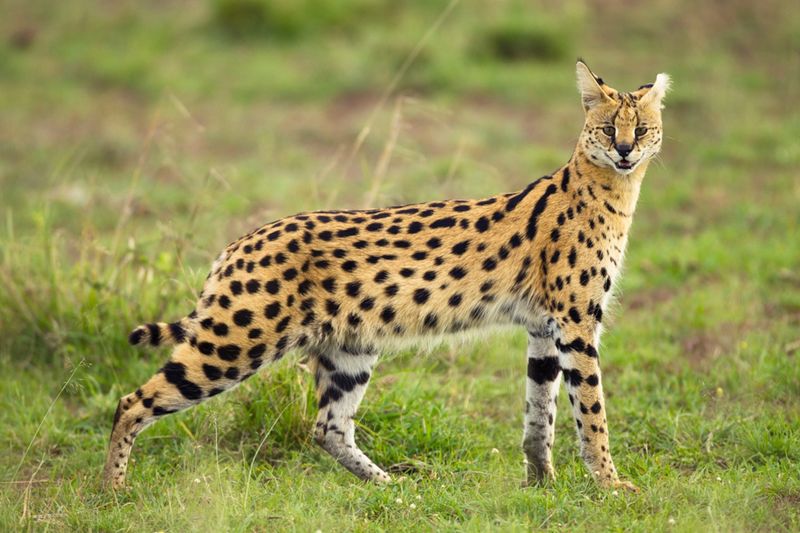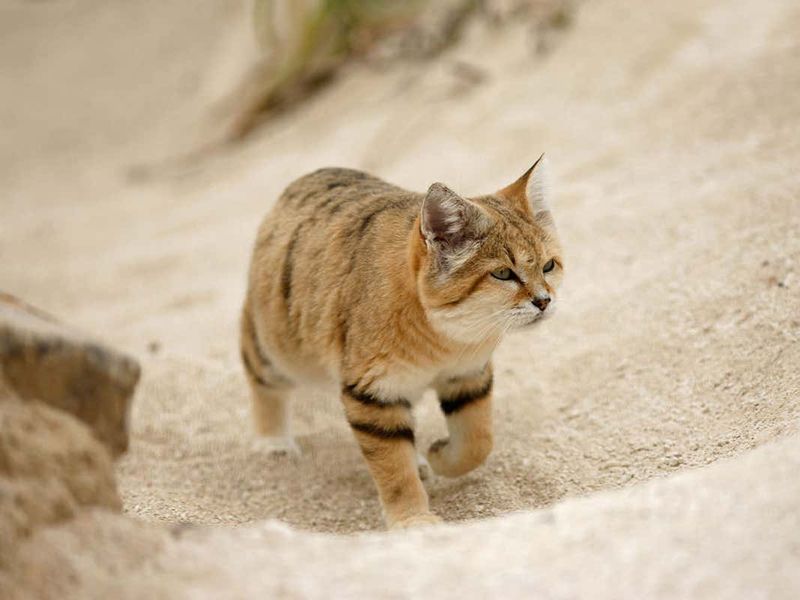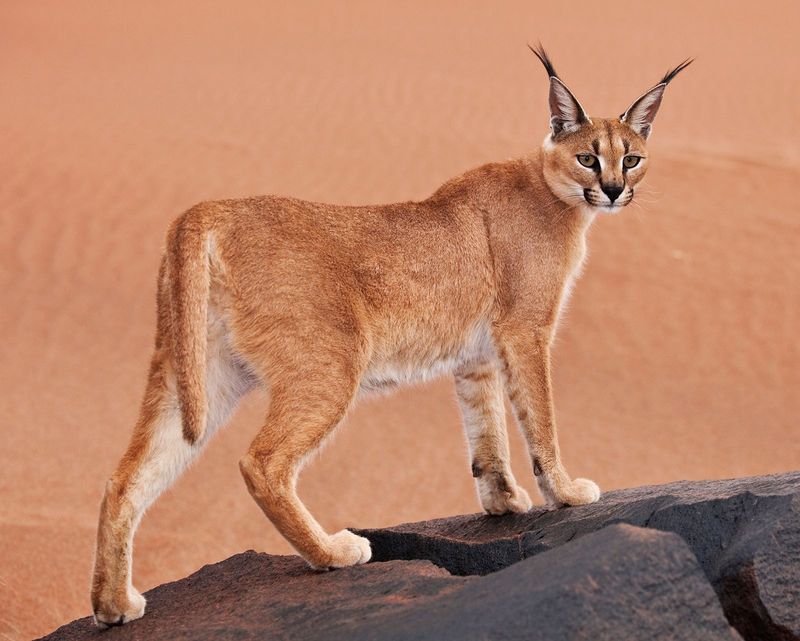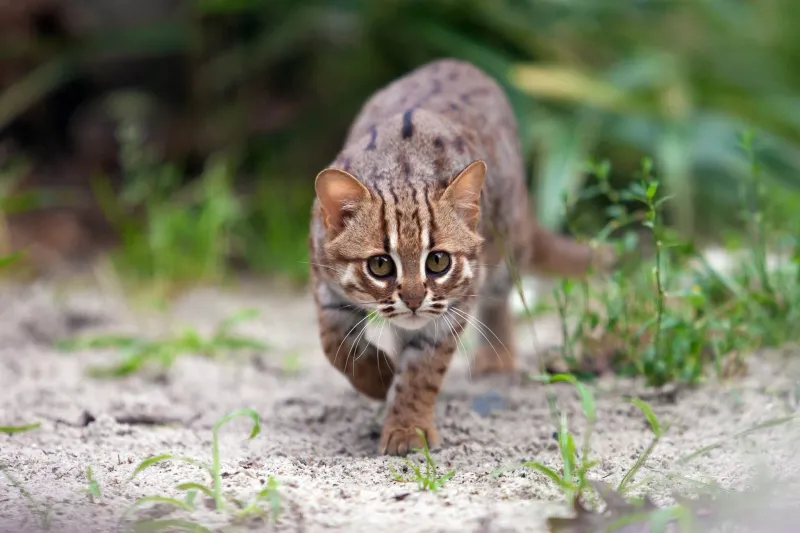The United States is home to several species of wild cats, each adapted to unique regions and environments. These elusive predators roam forests, mountains, swamps, and deserts, often remaining hidden from human sight. Despite their secretive nature, their presence plays a vital role in maintaining ecological balance.
From the compact and stealthy bobcat to the wide-ranging mountain lion, wild cats showcase a remarkable range of behaviors and adaptations. Their habitats stretch from the dense woodlands of the Northeast to the arid landscapes of the Southwest. Each species has evolved to thrive in specific conditions, making their distribution across the country both fascinating and complex.
Observing a wild cat in its natural setting is a rare and memorable experience. Their strength, agility, and quiet grace reflect the untamed beauty of North America’s wilderness. Learning about these native felines offers insight into their importance within local ecosystems and the efforts needed to protect them.
1. Bobcat
Bobcats are known for their elusive nature and remarkable adaptability. With tufted ears and a spotted coat, they blend seamlessly into various environments. These medium-sized cats are found across North America, from dense forests to arid deserts. Bobcats are solitary creatures, primarily nocturnal, and have a keen sense of hearing.
They are opportunistic hunters, preying on rodents, birds, and occasionally deer. Despite their wide range, bobcats are rarely seen, making a sighting a special occasion. Their stealth and agility are truly impressive. Did you know? Bobcats can leap up to ten feet in a single bound!
2. Mountain Lion
Also known as the cougar or puma, the mountain lion is the largest wild cat in North America. Found from Canada to the southern Andes, these cats are incredibly adaptable. Their tawny coat helps them blend into rocky terrains and forests alike. Mountain lions are solitary and territorial animals, known for their strength and stealth.
These magnificent creatures can run at speeds up to 50 miles per hour. Their powerful hind legs allow them to leap across vast distances. Seeing a mountain lion in the wild is a rare and exhilarating experience.
3. Ocelot
Resembling tiny leopards, ocelots have distinct markings that help them blend into their surroundings. Their U.S. range is limited, mostly to dense brushlands in southern Texas. These cats are solitary and nocturnal, hunting small prey under the cover of darkness.
Their diet includes small mammals, birds, and reptiles. Despite their beauty, ocelots face threats from habitat destruction and illegal pet trade. Conservation efforts are ongoing to protect these enchanting creatures. With their mesmerizing gaze and agile movements, ocelots captivate anyone lucky enough to spot them in the wild.
4. Canada Lynx
With its thick fur and large, padded paws, the Canada lynx is well-adapted to cold, snowy environments. These cats are predominantly found in the northern United States and throughout Canada. Their long legs and tufted ears give them an elegant appearance.
Canada lynx primarily prey on snowshoe hares and have a unique hunting strategy that involves stealth and patience. The lynx’s solitary nature and preference for remote, dense forests make them a rare sight for most people. Their ability to silently navigate snowy terrains is a testament to their evolutionary success.
5. Jaguarundi
The jaguarundi is a unique-looking wild cat with a slender build and a long tail. Found in the southernmost parts of the United States, jaguarundis inhabit brushy areas and are known for their diverse vocalizations. Unlike other wild cats, jaguarundis are more active during the day. They have a varied diet that includes small mammals, birds, and reptiles.
Due to their elusive nature and preference for dense habitats, these cats are rarely spotted. Their coat can range from reddish-brown to gray, offering camouflage in their environment. Jaguarundis are fascinating creatures with an air of mystery.
6. Jaguar
Powerful and strikingly patterned, jaguars are the largest wild cats found in the Western Hemisphere. Their main habitat lies in Central and South America, but a small number occasionally make their way into southern regions of the U.S., especially near Arizona.
These solitary cats prefer dense forests and swampy areas. Jaguars are powerful swimmers and often hunt near water, preying on fish, turtles, and caimans. Their strong jaws can crush the skulls of their prey with ease. These elusive giants are a symbol of strength and grace in the wild, leaving those who encounter them in awe.
7. Puma
Often referred to as cougars or mountain lions, pumas are among the most adaptable wild cats in America. Their range spans from the Canadian Yukon to the southern Andes of South America. These solitary cats are highly adaptable to various habitats, including forests, deserts, and mountains.
Pumas have a distinctive tawny coat, and their powerful physique enables them to take down large prey such as deer. Despite their wide distribution, pumas are elusive and prefer areas with minimal human presence. Observing a puma in its natural habitat is a rare and thrilling experience for wildlife enthusiasts.
8. Florida Panther
A subspecies of the puma, the Florida panther is native to the swamps and forests of southern Florida. With its sleek body and tawny coat, it is a striking creature of the wetlands. Panthers are solitary and territorial, requiring large expanses of land for hunting.
Their primary diet consists of deer, wild hogs, and small mammals. Despite their critical status, Florida panthers have slowly increased in number due to conservation efforts. These rare cats are an emblem of Florida’s wild beauty, and spotting one is a truly remarkable encounter.
9. Serval
Although native to Africa, the serval has found its way into the wilds of the United States through the exotic pet trade. These slender cats, with their long legs and large ears, resemble miniature cheetahs. Servals have a distinctive spotted coat, aiding them in the savanna-like grasslands where they prefer to hunt. They are skilled hunters, known for their ability to leap into the air to catch birds.
While rare in the wild U.S., escaped or released servals occasionally appear in various states. Their graceful presence and keen hunting skills make them fascinating to observe.
10. Bobcat
Bobcats, with their tufted ears and spotted coats, are masters of camouflage. These adaptable cats inhabit a wide range of environments across North America, from forests to deserts. Solitary by nature, bobcats are primarily nocturnal hunters, preying on small mammals and birds.
They are rarely seen by humans, which adds to their mystique. Bobcats have a unique ability to adapt to various environments, and their elusive nature makes every sighting a cherished moment. Their agility and resourcefulness are truly remarkable, making them a fascinating subject for wildlife enthusiasts.
11. Sand Cat
Adapted for desert survival, sand cats are small wild cats with features built for heat and sand. They aren’t native to the U.S., but a handful of sightings in the Southwest are thought to be due to captive escapes. Their thick coats and wide feet provide insulation and mobility in sandy terrain.
Sand cats are primarily nocturnal, hunting small rodents and insects. Their sand-colored coat provides excellent camouflage. This rare ability to adapt to desert life makes the sand cat a unique and intriguing creature for those lucky enough to glimpse it.
12. Caracal
With their signature ear tufts and strong bodies, caracals stand out among wild cats. They originate from Africa and Asia, but some have been seen in the U.S., likely after escaping from private collections. Agile and athletic, they’re capable of leaping several feet to catch airborne prey.
Caracals prefer open savannas and semi-deserts, where they can use their speed and stealth to their advantage. Their reddish-brown coat provides camouflage in these environments. Though rare in the U.S., caracals remain a captivating sight, embodying both beauty and power in the feline world.
13. Rusty-Spotted Cat
The rusty-spotted cat, one of the smallest wild cats in the world, is a rare sight in the U.S. Often referred to as the hummingbird of the cat family, its petite size and agility are remarkable. These cats have a reddish-grey coat with distinctive spots, providing camouflage in dense underbrush.
They are nocturnal and highly elusive, feeding on small rodents and birds. While native to India and Sri Lanka, a few have been reported in the U.S., likely as escapees. Their delicate presence and secretive nature make sightings a rare and cherished event.
